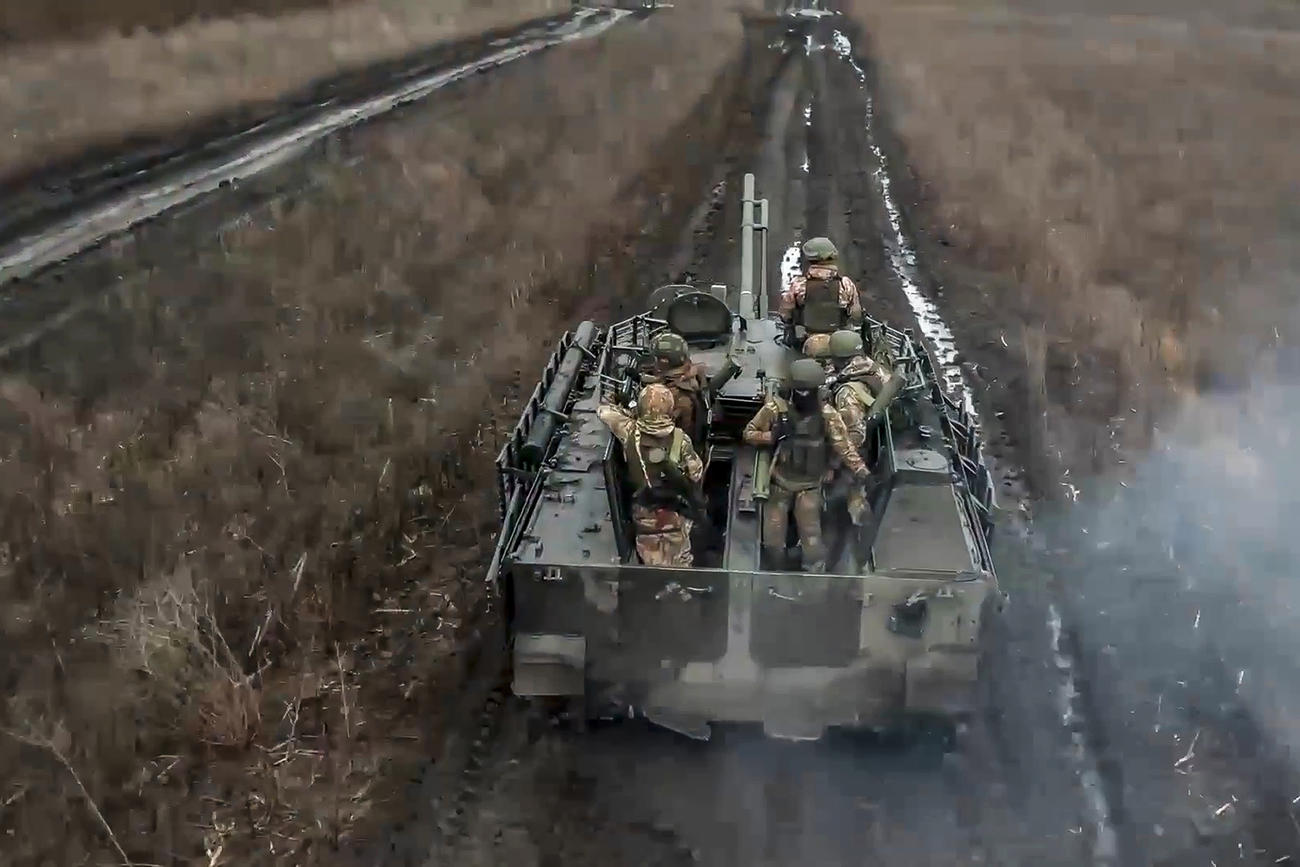
KYIV, Ukraine (AP) — Ukraine’s military chief on Saturday warned that the battlefield situation in the industrial east has “significantly worsened in recent days,” as warming weather allowed Russian forces to launch a fresh push along several stretches of the more 1,000 km-long (620-mile) front line.
In an update on the Telegram messaging app, Gen. Oleksandr Syrskyy said that Moscow had “significantly” ramped up its assaults since President Vladimir Putin extended his nearly quarter-century rule in a preordained election last month that saw anti-war candidates barred from the ballot and independent voices silenced in a Kremlin-backed media blockade.
According to Syrskyy, Russian forces have been “actively attacking” Ukrainian positions in three areas of the eastern Donetsk region, near the cities of Lyman, Bakhmut and Pokrovsk, and beginning to launch tank assaults as drier, warmer spring weather has made it easier for heavy vehicles to move across previously muddy terrain.
“Despite significant losses, the enemy is intensifying its efforts by using new units (equipped with) armored vehicles, thanks to which it periodically achieves tactical success,” Syrskyy said.
A Russian Defense Ministry spokesman on Saturday confirmed the capture of a village that had been the site of fierce fighting for close to eighteen months. Analysts from Ukraine’s non-governmental Deep State group, which tracks frontline developments, had reported on Russia’s takeover of Pervomaiske, some 45 kilometers (28 miles) southeast of Pokrovsk, in the early hours of Thursday.
On Saturday, the group said in a Telegram update that Moscow’s forces had also taken Bohdanivka, another eastern village close to the city of Bakhmut, where the war’s bloodiest battle raged for nine months until it fell to Russia last May. Ukraine’s Defense Ministry shortly afterwards denied that Bohdanivka had been captured, and said “intense fighting” continued there.
With the war in Ukraine entering its third year and a vital U.S. aid package for Kyiv stuck in Congress, Russian troops are ramping up pressure on exhausted Ukrainian forces on the front line to prepare to grab more land this spring and summer.
Russia has relied on its edge in firepower and personnel to step up attacks across eastern Ukraine. It has increasingly used satellite-guided gliding bombs — which allow planes to drop them from a safe distance — to pummel Ukrainian forces beset by a shortage of troops and ammunition.
Also on Saturday, Germany announced that it will deliver an additional Patriot air defense system to Ukraine, days after Russian missiles and drones on Thursday struck infrastructure and power facilities across several regions, leaving hundreds of thousands of homes without power, in what private energy operator DTEK described as one of the most powerful attacks this year. The German Defense Ministry said it would “begin the handover” of the Patriot system immediately, without providing a precise timeline.
In an update on X, formerly known as Twitter, German Chancellor Olaf Scholz said he had discussed the “massive” Russian air attacks on civilian energy infrastructure with Ukrainian President Volodymyr Zelenskyy on Saturday, and declared that Berlin will “stand unbreakably by Ukraine’s side.”
Putin described the strikes as retribution for Ukrainian attacks on Russia’s energy infrastructure, after a slew of Ukrainian drone strikes over the past few months hit oil refineries deep inside Russia.
Starting last month, Moscow renewed its assault on Ukrainian energy facilities. On Thursday it completely knocked out a plant that was the biggest energy supplier for the region around Kyiv, as well as the nearby Cherkasy and Zhytomyr provinces.
At least 10 of the strikes damaged energy infrastructure in Kharkiv, Ukraine’s second-largest city. Foreign Minister Dmytro Kuleba said more than 200,000 people in the region were without power and Russia “is trying to destroy Kharkiv’s infrastructure and leave the city in darkness.”
Energy facilities were also hit in the Zaporizhzhia and Lviv regions.
The volume and accuracy of recent attacks have alarmed the country’s defenders, who say Kremlin forces now have better intelligence and fresh tactics in their campaign to annihilate Ukraine’s electrical grid and bring its economy to a halt.
In the winter of 2022-2023, Russia took aim at Ukraine’s power grid in an effort to deny civilians light and heating and chip away at the country’s appetite for war.
In Ukraine’s Russian-occupied south, a local Kremlin-installed official blamed Kyiv for a shelling attack that killed 10 people, including children, in a town in the southern Zaporizhzhia region the previous day.
The Tokmak municipal administration reported on Telegram that the shelling struck three apartment blocks Friday evening. Five people were pulled alive from the rubble and 13 people were hospitalized, according to the Kremlin-installed regional head Yevhen Balitsky. It was not immediately possible to verify his claims.
Ukrainian officials did not immediately acknowledge or comment on the attack.
Meanwhile, in Ukraine, a Russian drone on Saturday dropped explosives on an ambulance that had been called out to a village near the frontline city of Kupiansk, wounding its 58-year-old driver, local Gov. Oleh Syniehubov reported. His claim could not be independently verified.
© Copyright 2024 Associated Press. All rights reserved. This material may not be published, broadcast, rewritten or redistributed.









